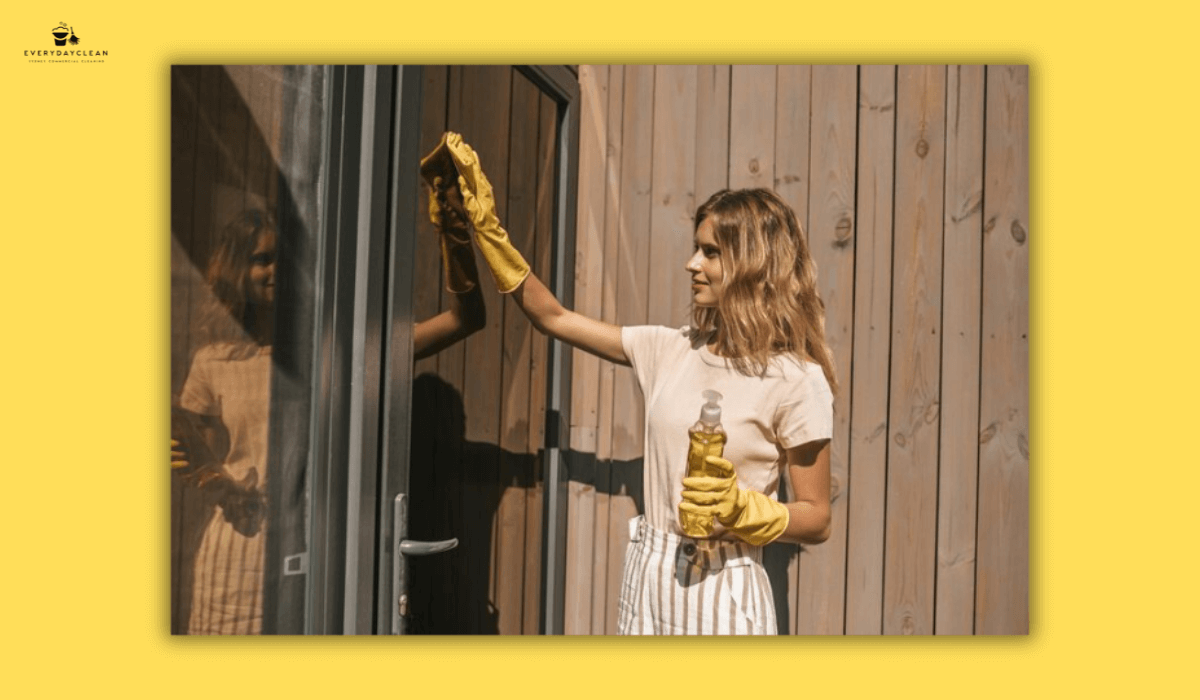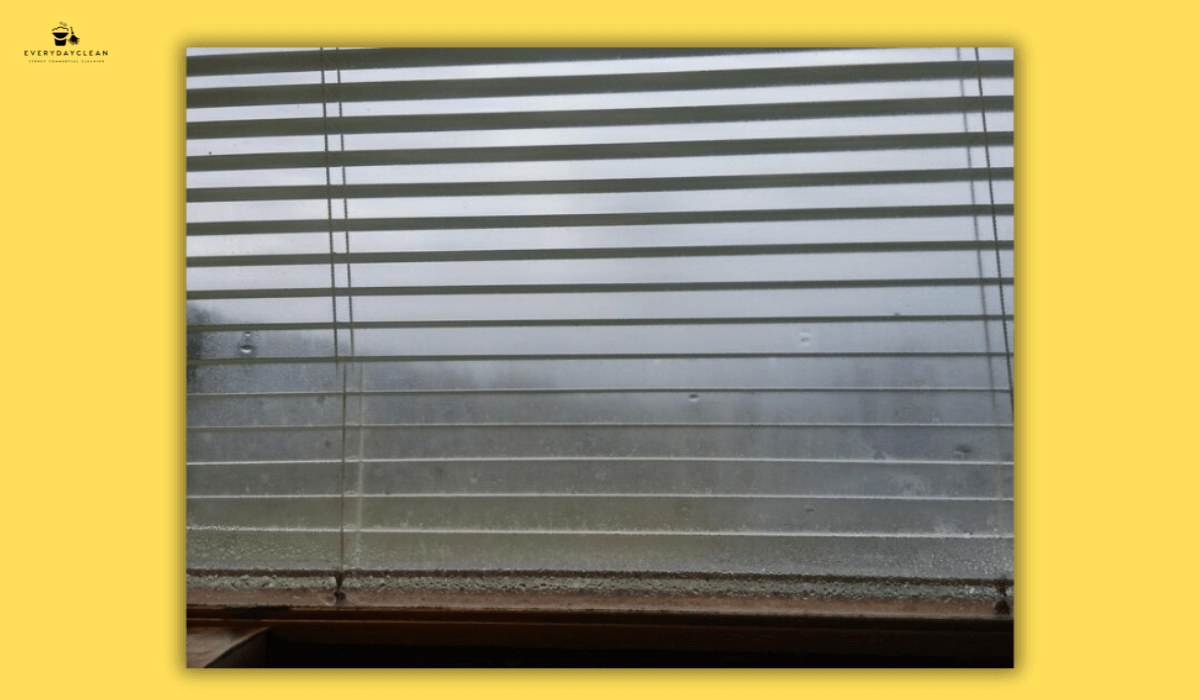Office Cleaning Safety Tips: 7 Must-Follow Practices
Office cleaning safety tips are the foundation of a risk-free, compliant workplace. A safe cleaning routine protects staff from chemical exposure, prevents slips and trips, and keeps operations aligned with WHS standards. The most effective practices include:
- Wearing proper PPE such as gloves, non-slip shoes, and masks
- Displaying wet floor signs until surfaces are dry
- Storing and labelling cleaning chemicals correctly
- Cleaning carefully around electrical equipment
- Removing trip hazards during vacuuming or mopping
- Training staff to handle hazardous waste safely
- Using and reviewing a cleaning safety checklist regularly
By following these seven proven steps, offices can maintain hygiene while reducing accidents, meeting compliance obligations, and ensuring staff well-being.
For businesses looking to adopt greener practices, integrating the right products from our office
eco cleaner recommendations
can improve both safety and sustainability.
Office Cleaning Safety Checklist: 7 Critical Practices to Follow
A structured safety checklist ensures no step is missed when cleaning shared or high-traffic office spaces. Below are the key office cleaning safety tips every facility should adopt:
1. Wear Proper PPE (Personal Protective Equipment)
Protective equipment is the first line of defence for cleaning staff. Gloves, non-slip shoes, and face masks help reduce the risk of chemical contact and surface contamination.
Checklist Step:
- Provide gloves, goggles, and slip-resistant shoes for all cleaners
- Use face masks when applying sprays or aerosol disinfectants
- Ensure uniforms or aprons are laundered frequently
2. Display Wet Floor Signs During and After Cleaning
Slippery floors are a leading cause of workplace injuries. Any time mopping, scrubbing, or spill-cleaning is underway, clear signage must be in place.
Checklist Step:
- Position “Wet Floor” signs at all entry points to the affected area
- Keep the signs in place until the floor is completely dry
- Inspect regularly to prevent water pooling
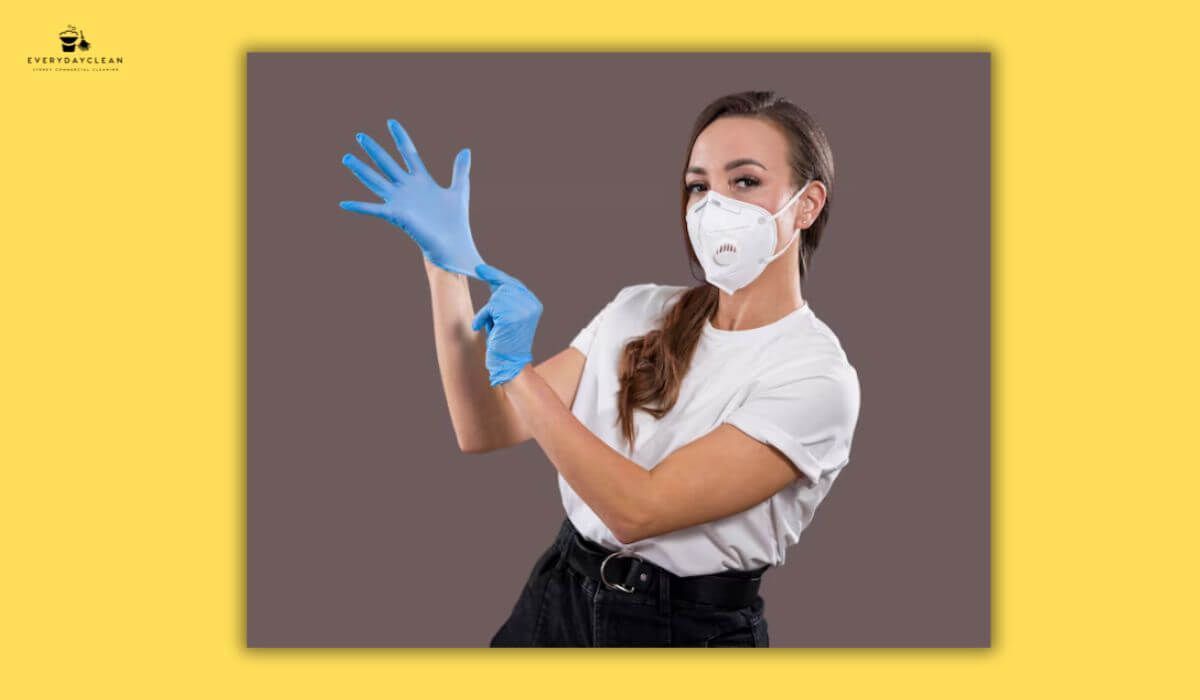
3. Store and Label Cleaning Chemicals Safely
Safe storage and usage of cleaning agents are vital to prevent accidents. Every bottle must be correctly labelled and used according to the manufacturer’s directions.
Checklist Step:
- Maintain a dedicated, ventilated cleaning storage area
- Keep SDS (Safety Data Sheets) on-site and accessible
- Never mix incompatible chemicals (e.g., bleach and ammonia)
4. Clean Around Electrical Equipment with Caution
Cleaning near desks, power boards, and computers can result in serious hazards if protocols aren't followed.
Checklist Step:
- Unplug appliances before wiping them
- Avoid spraying solutions near outlets
- Use microfiber cloths for electronics and screens
5. Remove Trip Hazards While Cleaning
During vacuuming or floor cleaning, cords and supplies can block walkways. This is especially risky in busy offices.
Checklist Step:
- Clean during low-traffic hours
- Tuck cables along walls or use cordless equipment
- Store cleaning tools upright and out of pathways
6. Train Staff to Handle Hazardous Waste Properly
Even in offices, cleaners may encounter used batteries, broken glass, or sanitary waste. Safe disposal reduces infection risk and environmental harm.
Checklist Step:
- Provide training in handling and sorting hazardous materials
- Use labelled disposal bins and sharps containers
- Arrange professional waste collection where required
7. Use and Review a Cleaning Safety Checklist Regularly
An internal checklist supports consistent, compliant cleaning every time. This also serves as a training and supervision tool.
Checklist Step:
- Include PPE checks, signage, chemical usage logs, and incident protocols
- Digitally record daily or shift-based compliance
- Have a supervisor review logs weekly
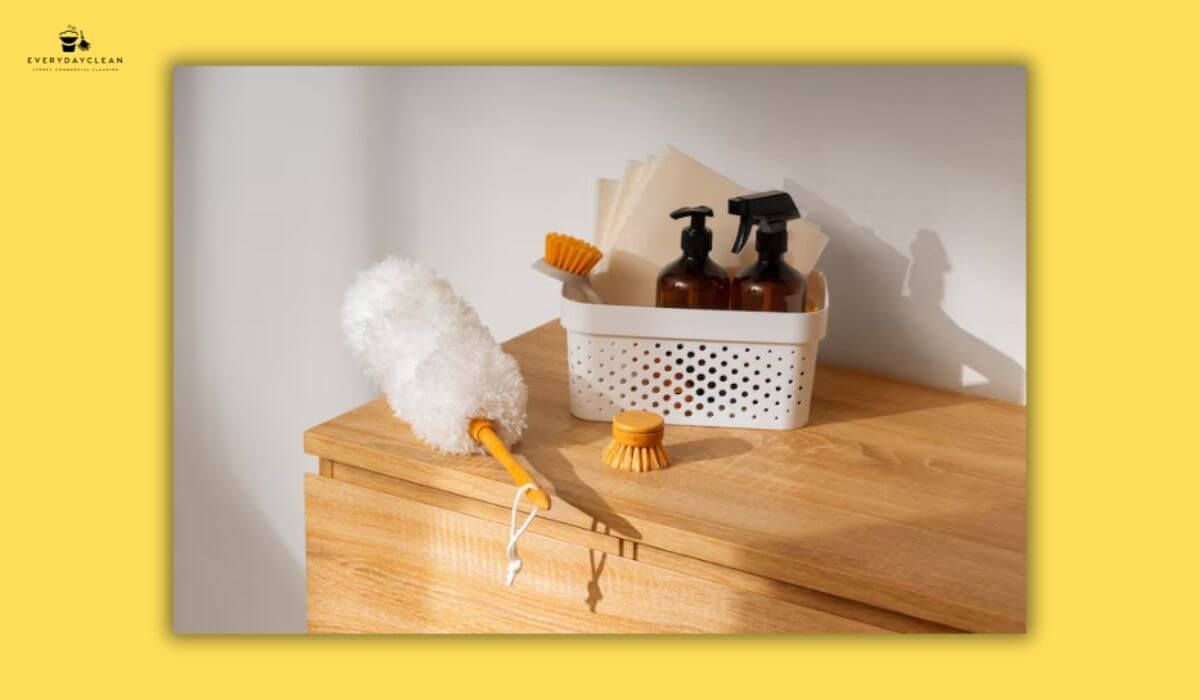
Supporting Safety with the Right Cleaning Partners
Even the most diligent internal teams may fall short without proper training and oversight. Partnering with a professional commercial cleaning company ensures compliance, WHS alignment, and access to industry-grade tools and techniques.
Everyday Clean’s experienced teams are trained in all aspects of office cleaning safety—ensuring workplaces remain hygienic and risk-free, without disrupting daily operations.
What to Include in a Cleaning Safety Protocol
Before jumping into a table, it’s important to understand what a full safety system involves. These elements work together to ensure a safe office cleaning routine across all areas—from shared kitchens to executive meeting rooms.
| Element | Purpose |
|---|---|
| PPE | Prevents contact with contaminants or cleaning chemicals |
| Wet Floor Signage | Alerts employees to slip hazards |
| SDS (Safety Data Sheets) | Explains safe chemical usage and first aid procedures |
| Chemical Labels | Ensures the correct identification of hazardous substances |
| Cleaning Checklist | Standardises procedures and reduces missed steps |
| Hazard Waste Protocol | Guides the safe disposal of sanitary or dangerous materials |
| WHS Training | Keeps all cleaning staff informed and compliant |
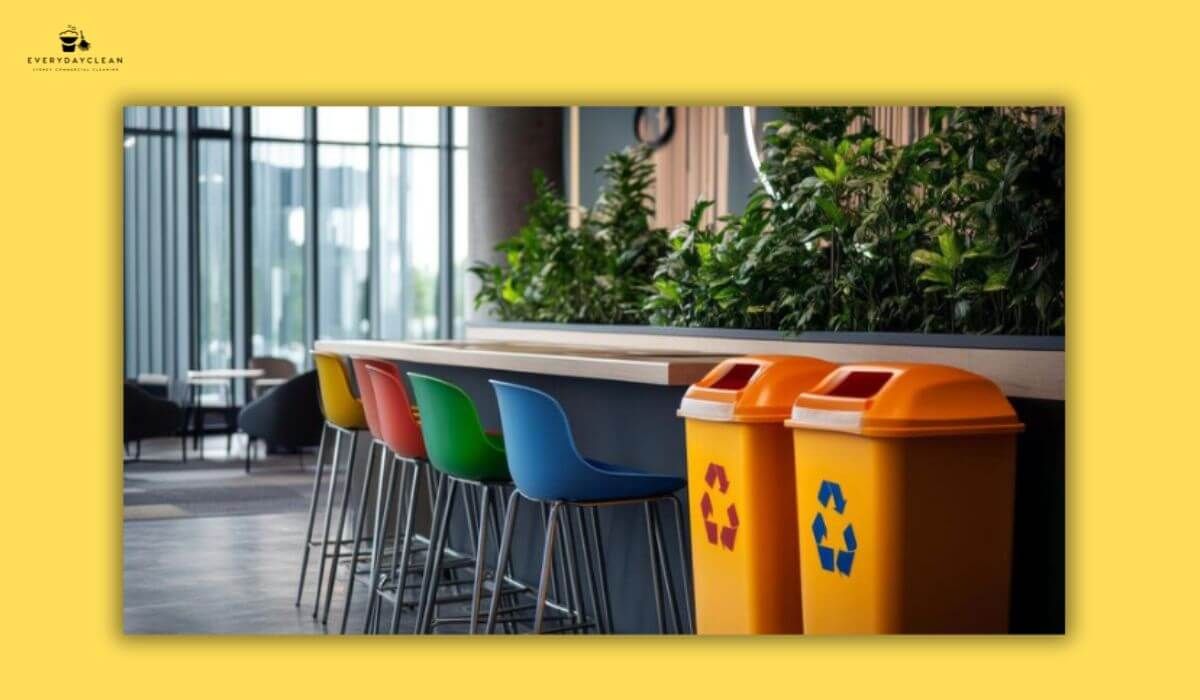
FAQs: Office Cleaning Safety Tips
Cleaning safety in the workplace is a frequent concern for both managers and staff. Below are detailed answers to the most-searched questions about cleaning safety protocols in office settings.
How can office cleaning be performed safely?
Office cleaning is safest when it follows a structured, checklist-based routine that includes PPE use, chemical safety, signage, and hazard avoidance. Staff should be trained on WHS standards and cleaning procedures. Using clearly marked chemicals, removing trip hazards, and cleaning during off-peak hours all contribute to minimising risks. Regular review and logging of cleaning activities helps maintain consistency and accountability.
What should be included in an office cleaning safety checklist?
An effective checklist should cover:
- PPE and equipment inspections
- Chemical storage and labelling
- Wet floor signage procedures
- Cleaning timeframes (e.g., after-hours for common areas)
- Incident reporting protocol
- Emergency contact details
This checklist should be tailored to the office layout, reviewed weekly, and updated in accordance with any WHS regulation changes.
What are common hazards during office cleaning?
Common hazards include:
- Slips from wet floors
- Chemical burns or inhalation
- Electrical accidents near sockets or devices
- Trips from cords or tools left in walkways
- Cross-contamination in kitchens or bathrooms
These can be prevented with training, signage, proper timing, and organised workflows.
What cleaning chemicals are safest for offices?
Safer office chemicals include:
- Neutral pH all-purpose cleaners
- Non-toxic degreasers
- Hydrogen peroxide-based disinfectants
Avoid mixing strong chemicals, and always follow SDS instructions. Eco-friendly, certified commercial cleaning products are ideal for closed office environments where employees may be sensitive to fumes or residues.
Who is responsible for cleaning safety in an office?
Responsibility is shared between:
- The cleaning service provider or in-house team (execution)
- The office or facility manager (oversight and WHS alignment)
- Each employee (reporting hazards or unsafe practices)
Partnering with a trained commercial cleaning provider, such as Everyday Clean, ensures all roles are clearly defined and executed to standard.
Trust Sydney’s Safe Office Cleaning Experts
When it comes to commercial cleaning, safety is non-negotiable. Everyday Clean uses certified protocols, trained staff, and WHS-compliant systems to ensure every Sydney office is not only clean—but risk-free, hygienic, and professionally maintained.
Request a free quote today and upgrade your office cleaning with safety-first professionals at Everyday Clean.
Author: Everyday Clean Content Team
Everyday Clean is Sydney’s trusted provider of commercial cleaning solutions, including pools, gyms, offices, and strata properties. Our licensed professionals use advanced, eco-friendly equipment to deliver safe, compliant, and spotless results. With deep experience across Sydney’s hospitality, fitness, and residential sectors, we help facilities maintain inviting, healthy environments that guests trust.
